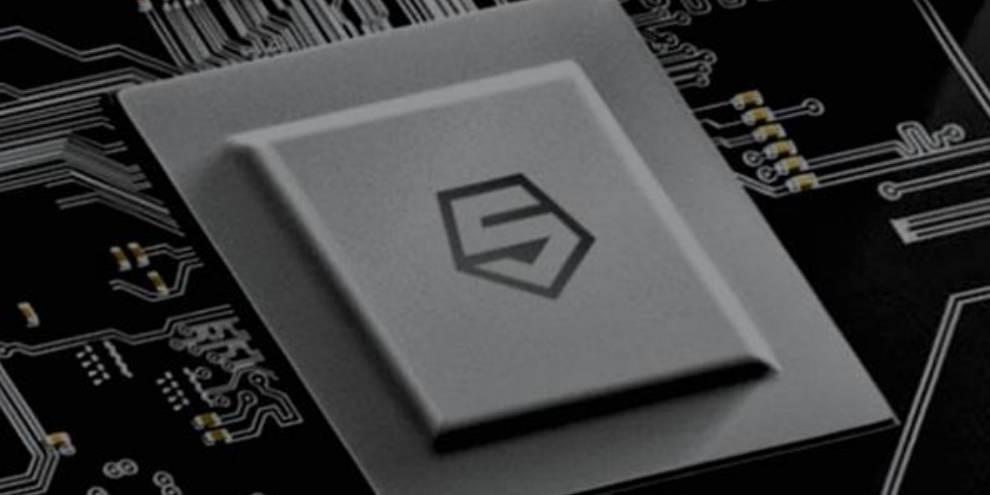SiMa.ai Launches Modalix: A Game-Changing Chip for On-Device Physical AI
2 Sources
2 Sources
[1]
SiMa.ai Launches Chip to Run Reasoning-Based LLMs On-Device in Under 10 Watt | AIM
The new Modalix SoM and DevKit are now available, with pricing for the 8GB SoM starting at $349 and the 32GB version at $599. SiMa.ai, the US-based AI chip company, has launched its next-generation platform to accelerate the growth of Physical AI applications. The company introduced the Modalix Machine Learning System on a Chip (MLSoC) along with a new System-on-Module (SoM) and development kits, aiming to meet the growing demand for Physical AI in sectors like robotics, automotive, and healthcare. Modalix is a second-generation MLSoC designed to deliver high performance without compromising power efficiency, operating at less than 10 watts. "The era of Physical AI is here. With Modalix now in production, we're accelerating its global adoption," said Krishna Rangasayee, founder and CEO of SiMa.ai. Its flexible, Arm-based architecture enables real-time decision-making, natural language interaction, and
[2]
SiMa.ai launches its next-gen system-on-chip for physical AI into production - SiliconANGLE
SiMa.ai launches its next-gen system-on-chip for physical AI into production Artificial intelligence chip startup SiMa Technologies Inc. today announced it is shipping its second-gen system-on-chip platform specifically designed for multimodal physical AI workloads intended for embedding in robots, industrial equipment, vehicles and more. The new chip, named MLSoC Modalix, is designed for a system-on-module that matches the pin configuration and form factor of leading graphics processing units, enabling it to serve as the physical "brain" for edge devices running AI models. The chip allows companies to run various AI systems, including large language models such as Meta Platforms Inc.'s Llama models, convolutional neural networks, transformer models, vision language models, and other machine learning algorithms. Physical AI refers to the combination of artificial intelligence and physical systems, including robots, autonomous vehicles and smart devices. This integration enables these systems to perceive their environment, interact with it, and learn from their experiences. It combines AI algorithms, such as LLMs, so that they can process data from cameras and other sensors and then make decisions based on that information. This technology depends heavily on having low-power hardware that can handle computation at the edge, where small computers can process massive amounts of sensor data and run AI models directly in vehicles or robots without needing to offload them to the cloud. The further away from the action that data needs to be processed, the longer it takes for a round-trip for a reaction from a robot or a machine. This latency can make or break when safety or critical decisions must be made, or when networking is not available. The company originally debuted the Modalix machine learning SoC last year, but is announcing today that it's shipping the system and chipset, available immediately. According to SiMa.ai, the Modalix SoM will help operations address the diverse needs of the industry for different types of AI systems across the edge market by providing a chip that can handle many kinds of models and integrate easily into existing systems. SiMa.ai said it partnered with Synopsys Inc., a leading company in the field of electronic design and automation, to develop and innovate the new chip, accelerate design and achieve bug-free silicon in record time. "The development of Physical AI applications requires validated, purpose-built silicon and software that is only possible using the most advanced design solutions," said Ravi Subramanian, chief product management officer of Synopsys. In addition to the Modalix SoM, SiMa.ai introduced LLiMa, a unified on-device framework for running LLMs, VLMs and more on board. It enables developers to quickly import both open-source and custom AI models into Modalix-ready binaries, while also supporting numerous libraries for physical AI applications. VLMs, or vision language models, combine the capabilities of LLMs with visual reasoning, allowing them to process both text and images, which is fundamental for categorizing components of an image or video and understanding it. Combined with robotics or other systems, VLMs can be used to automate visual inspection of products and parts to identify defects and ensure quality standards, enable robots to understand and execute tasks based on natural language commands, track and monitor products through a supply chain, and more. "The era of Physical AI is here! With Modalix now in production, we're accelerating its global adoption," said Krishna Rangasayee, founder and chief executive of SiMa.ai. Rangasayee added that demand for the system-on-module has been strong leading up to the worldwide launch. The module and devkit are available from SiMa.ai today for enterprise deployments for 1,000 units, starting at $349 for 8GB SoM and $599 for 32GB SoM per unit. The devkit is priced at $1,499.
Share
Share
Copy Link
SiMa.ai introduces Modalix, a next-generation chip designed to run reasoning-based LLMs and other AI models on-device with high performance and low power consumption, targeting robotics, automotive, and healthcare sectors.
SiMa.ai Unveils Modalix: A Breakthrough in Physical AI Chip Technology
SiMa.ai, a US-based AI chip company, has announced the launch of its next-generation platform, Modalix, designed to accelerate the growth of Physical AI applications. This innovative Machine Learning System on a Chip (MLSoC) represents a significant leap forward in on-device AI processing capabilities, particularly for sectors such as robotics, automotive, and healthcare
1
2
.Modalix: Powering the Era of Physical AI

Source: AIM
The Modalix MLSoC is a second-generation chip that delivers high performance without compromising power efficiency. Operating at less than 10 watts, it enables real-time decision-making, natural language interaction, and complex AI model execution directly on edge devices
1
. This breakthrough allows for the running of various AI systems, including large language models (LLMs) like Meta's Llama, convolutional neural networks, transformer models, and vision language models (VLMs)2
.Krishna Rangasayee, founder and CEO of SiMa.ai, emphasized the significance of this launch, stating, "The era of Physical AI is here. With Modalix now in production, we're accelerating its global adoption"
1
.Technical Specifications and Availability
The Modalix System-on-Module (SoM) is designed to match the pin configuration and form factor of leading graphics processing units, making it an ideal "brain" for edge devices running AI models
2
. SiMa.ai has introduced two variants of the Modalix SoM:- 8GB version: Starting at $349
- 32GB version: Starting at $599
Additionally, a development kit priced at $1,499 is available for enterprise deployments of 1,000 units or more
2
.LLiMa: Unifying AI Model Integration

Source: SiliconANGLE
Alongside Modalix, SiMa.ai has introduced LLiMa, a unified on-device framework for running LLMs, VLMs, and other AI models. This framework enables developers to quickly import both open-source and custom AI models into Modalix-ready binaries, while also supporting numerous libraries for physical AI applications
2
.Related Stories
Industry Collaboration and Impact
SiMa.ai partnered with Synopsys Inc., a leader in electronic design and automation, to develop and innovate the new chip. This collaboration helped accelerate the design process and achieve bug-free silicon in record time
2
.Ravi Subramanian, chief product management officer of Synopsys, highlighted the importance of this development, saying, "The development of Physical AI applications requires validated, purpose-built silicon and software that is only possible using the most advanced design solutions"
2
.Applications and Future Prospects
The Modalix platform is poised to revolutionize various industries by enabling advanced AI capabilities in edge devices. Some potential applications include:
- Automated visual inspection in manufacturing
- Natural language command execution in robotics
- Real-time decision-making in autonomous vehicles
- Enhanced patient monitoring in healthcare
As the demand for edge AI continues to grow, SiMa.ai's Modalix platform is well-positioned to address the diverse needs of the industry, offering a versatile solution for integrating powerful AI capabilities into existing systems
2
.References
Summarized by
Navi
Related Stories
Recent Highlights
1
Meta acquires Manus for $2 billion, adding revenue-generating AI agents to its platforms
Business and Economy

2
Nvidia locks in $20 billion Groq deal, securing AI chip rival's technology and talent
Business and Economy

3
Geoffrey Hinton warns AI job replacement will accelerate in 2026 as systems gain new capabilities
Technology








